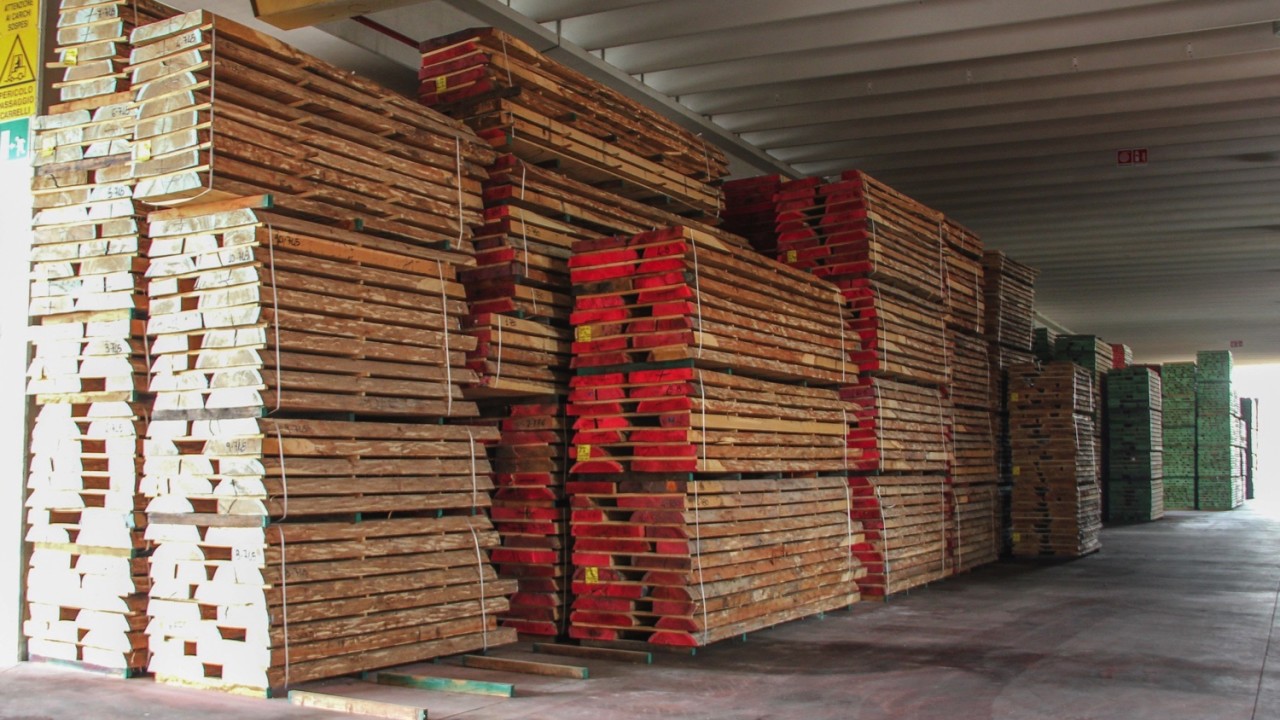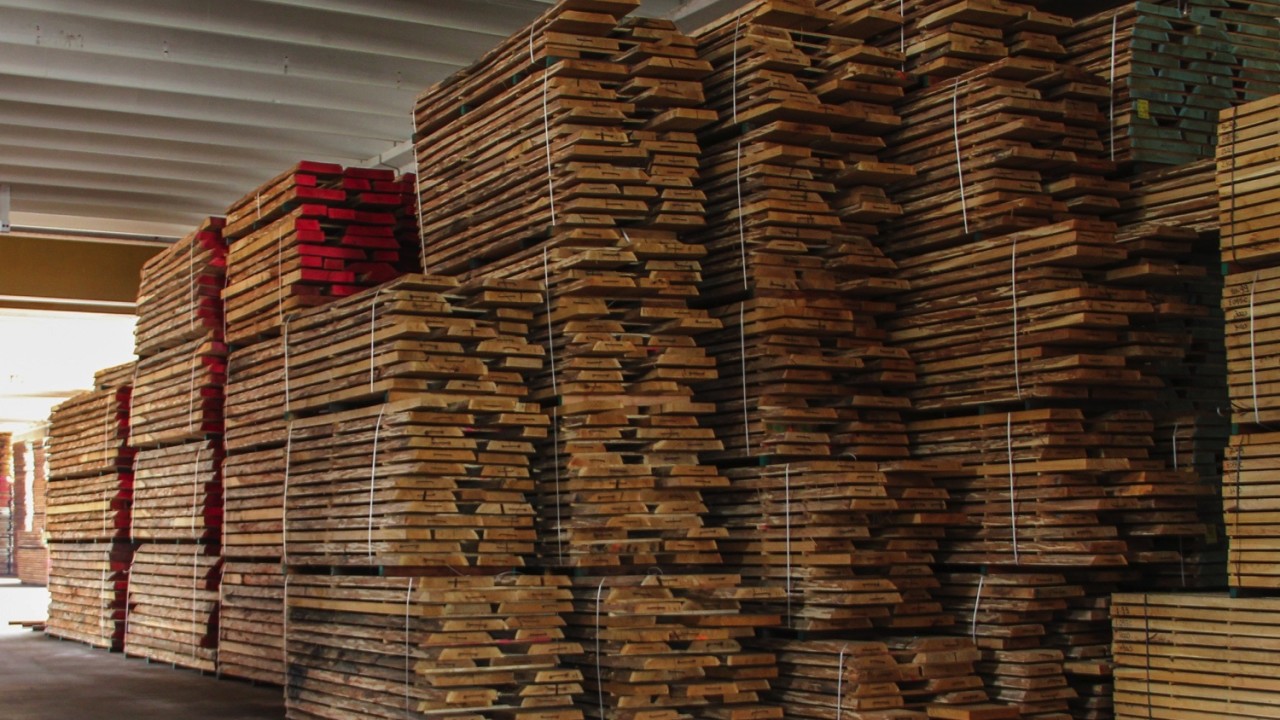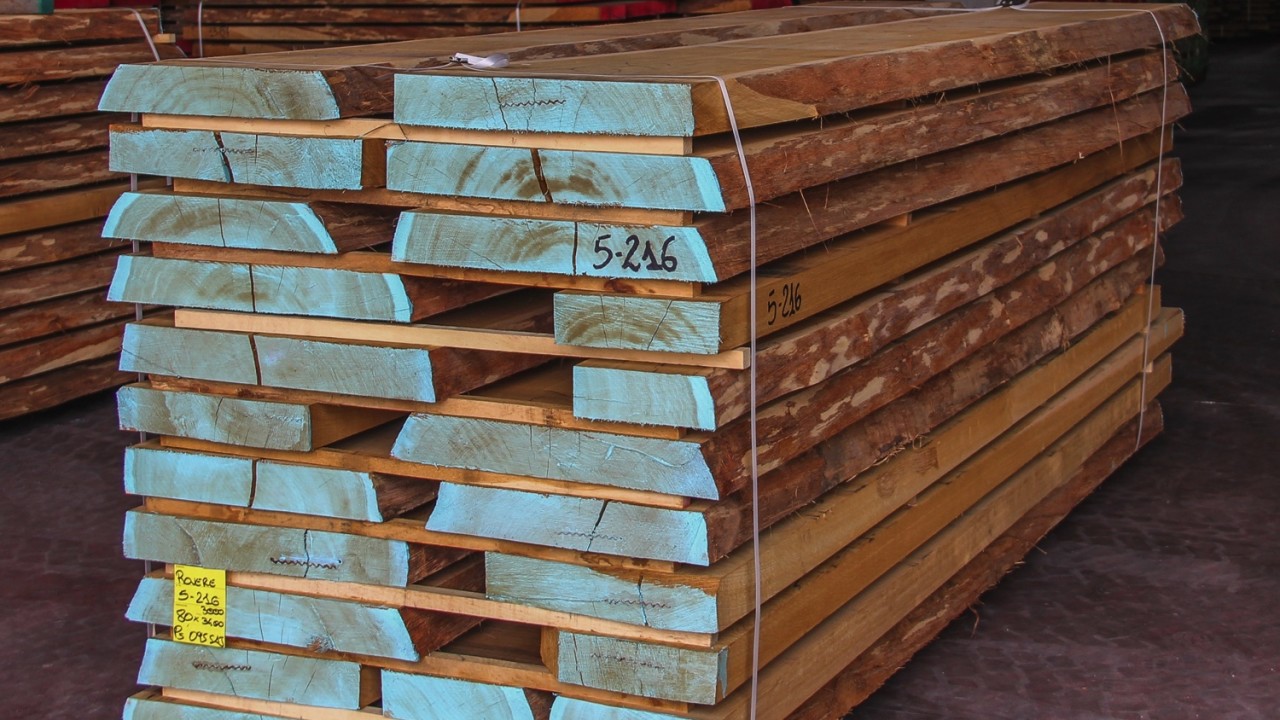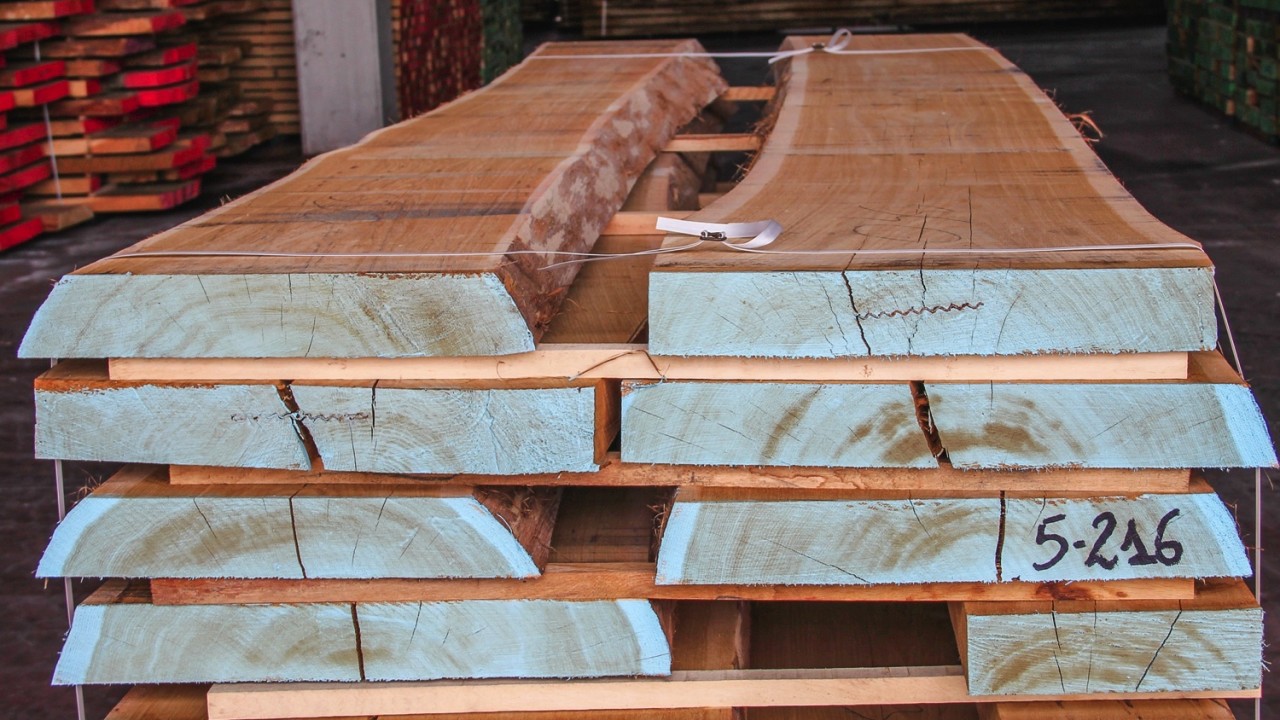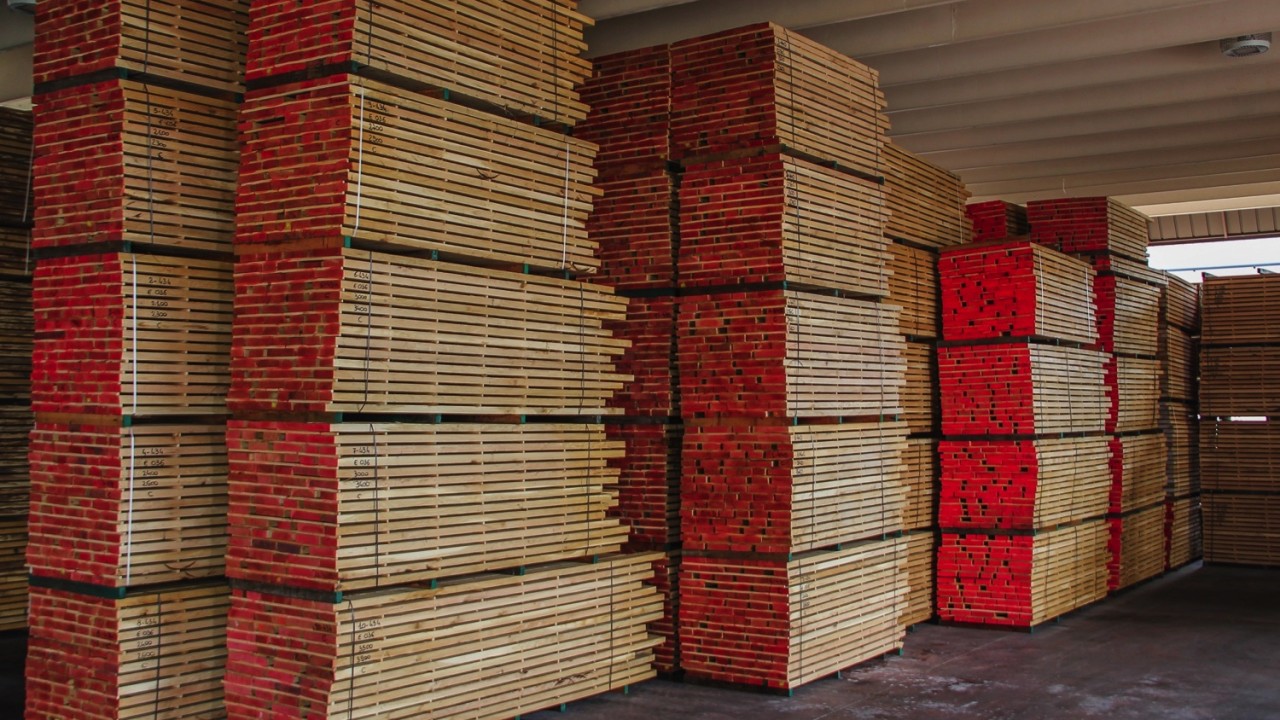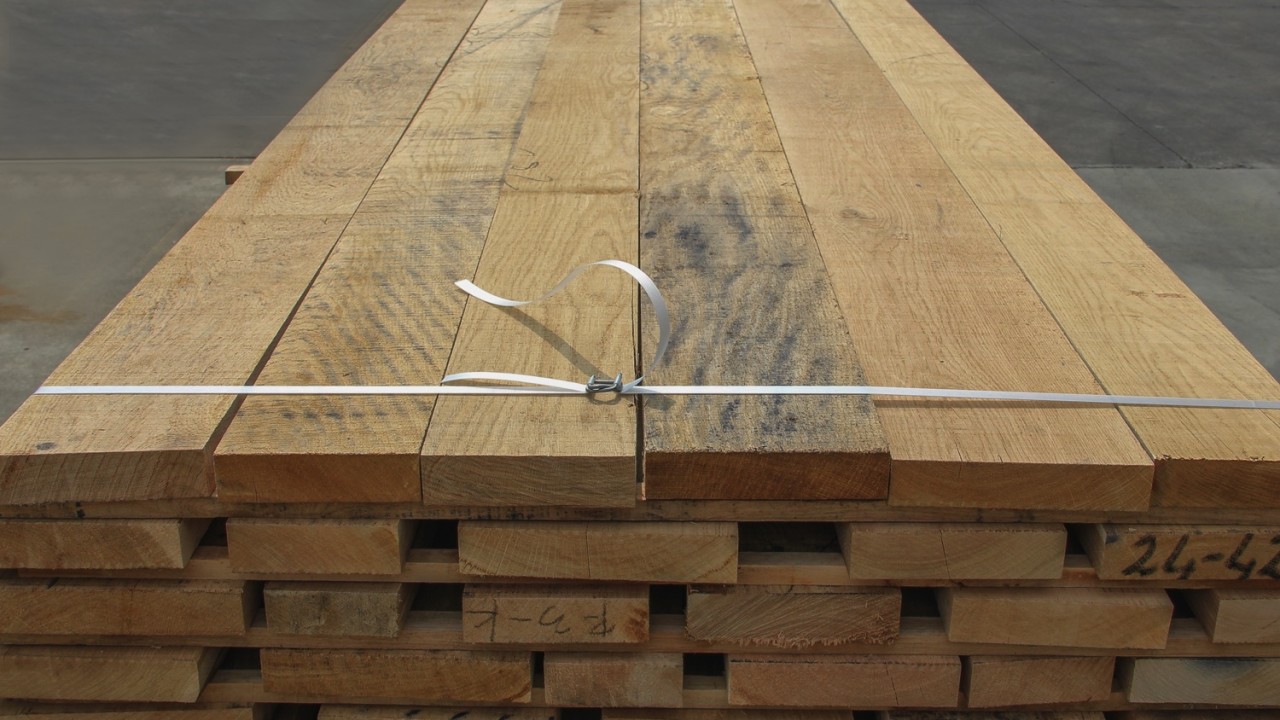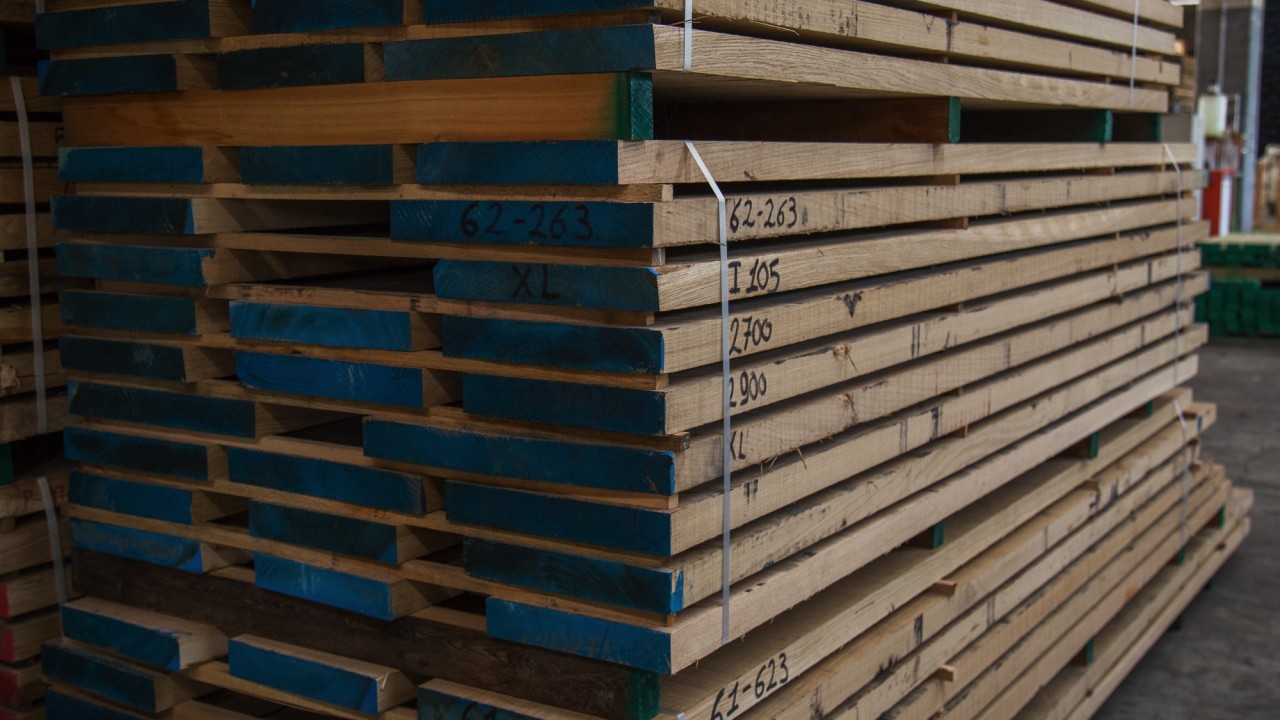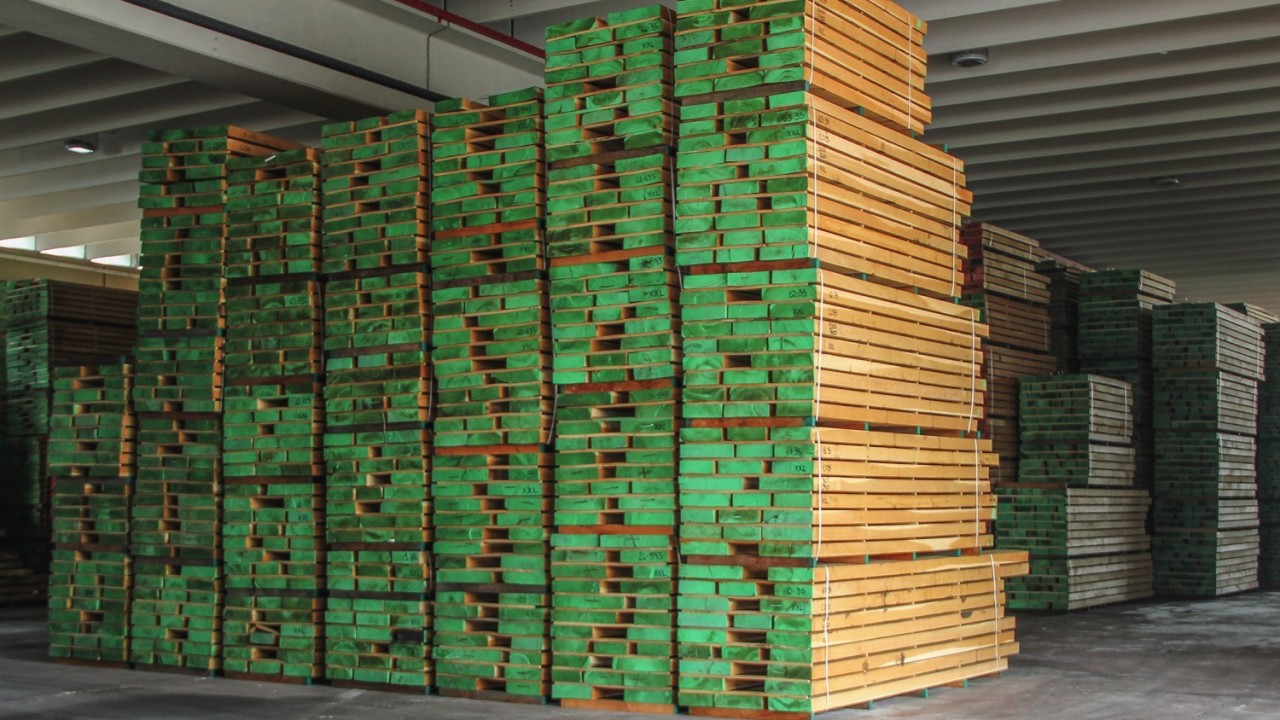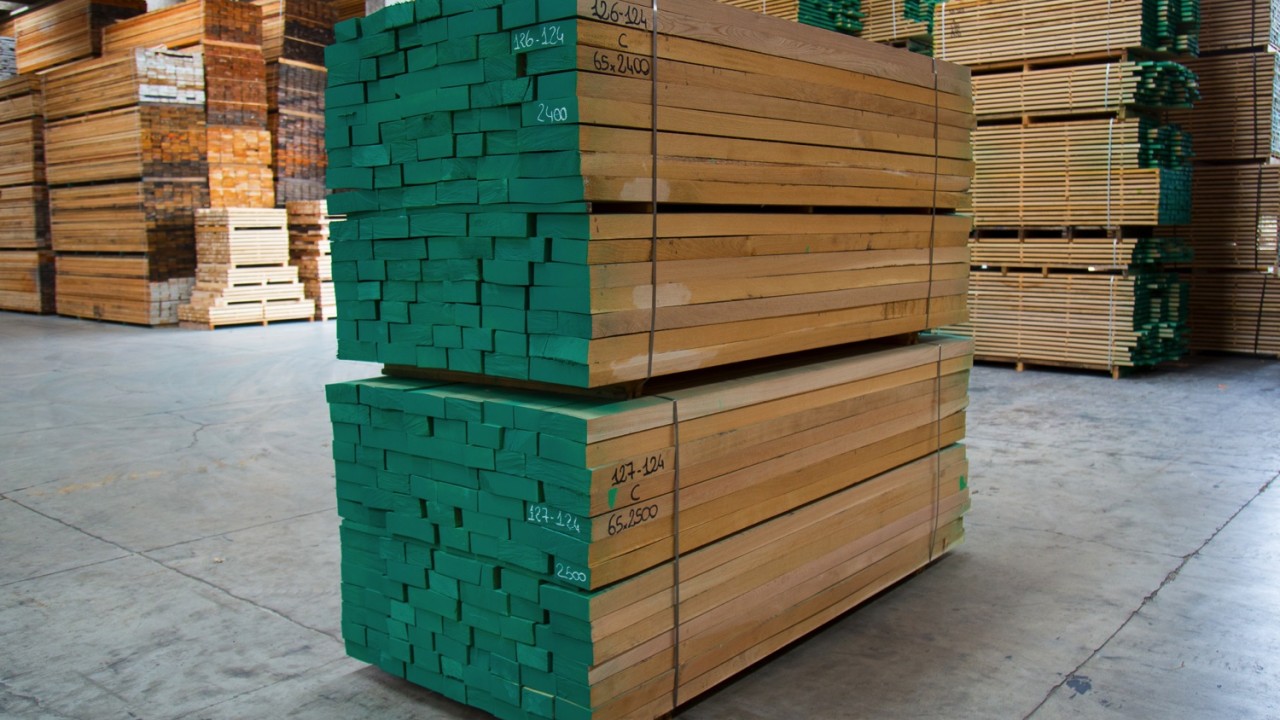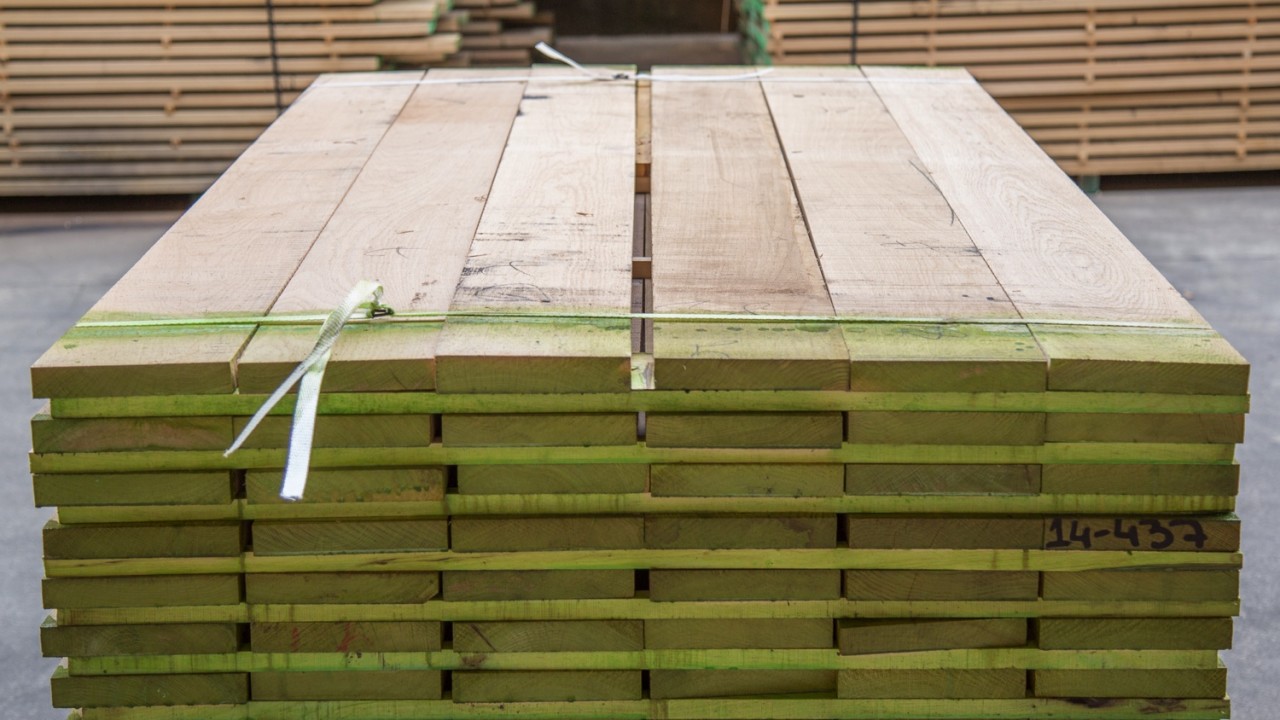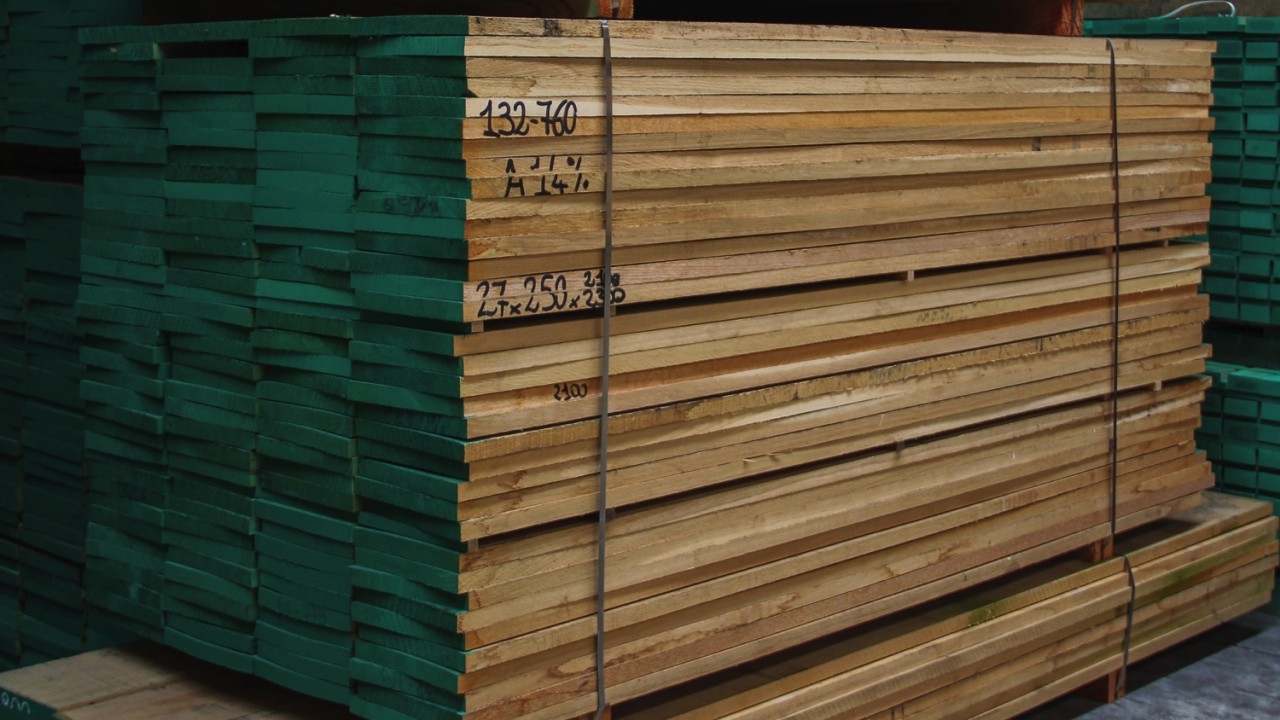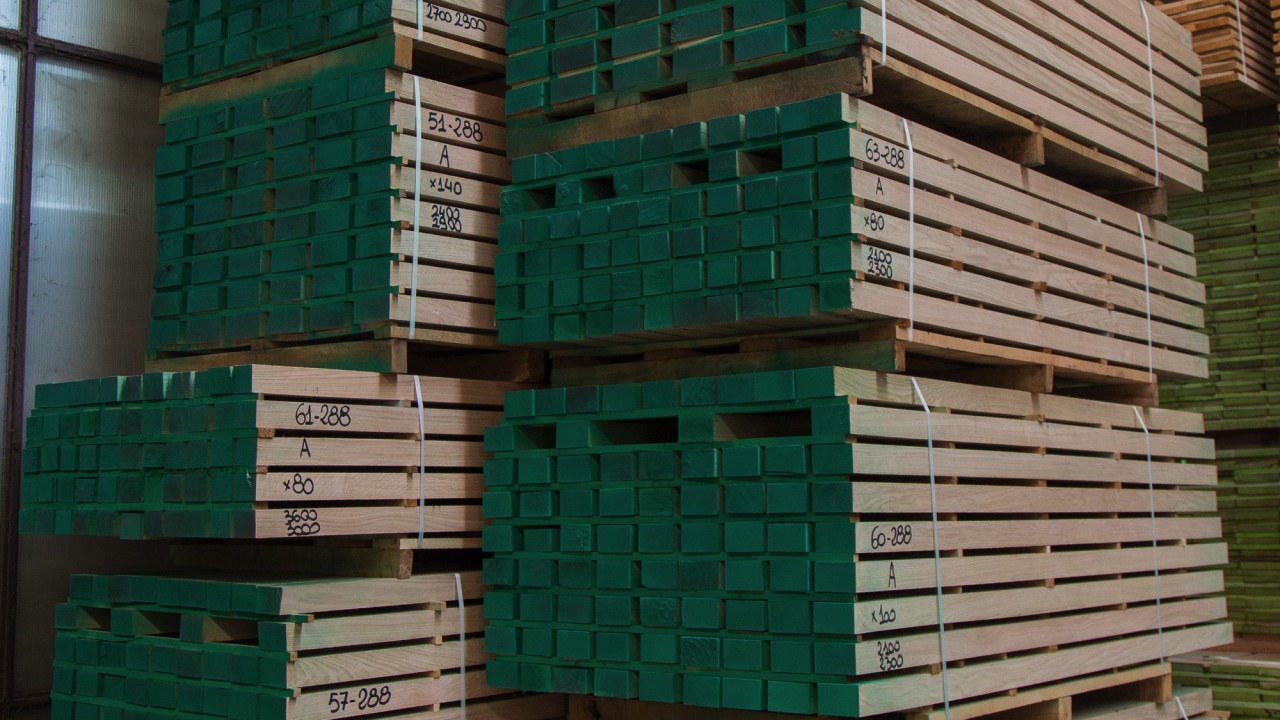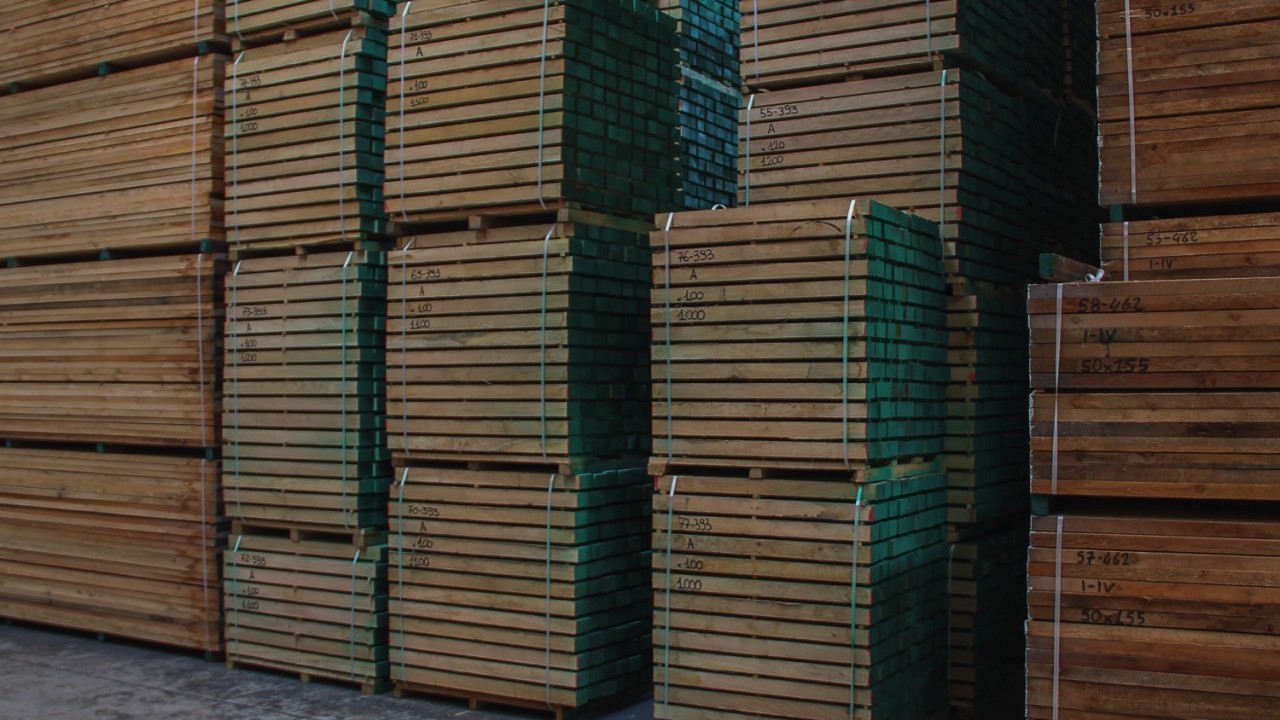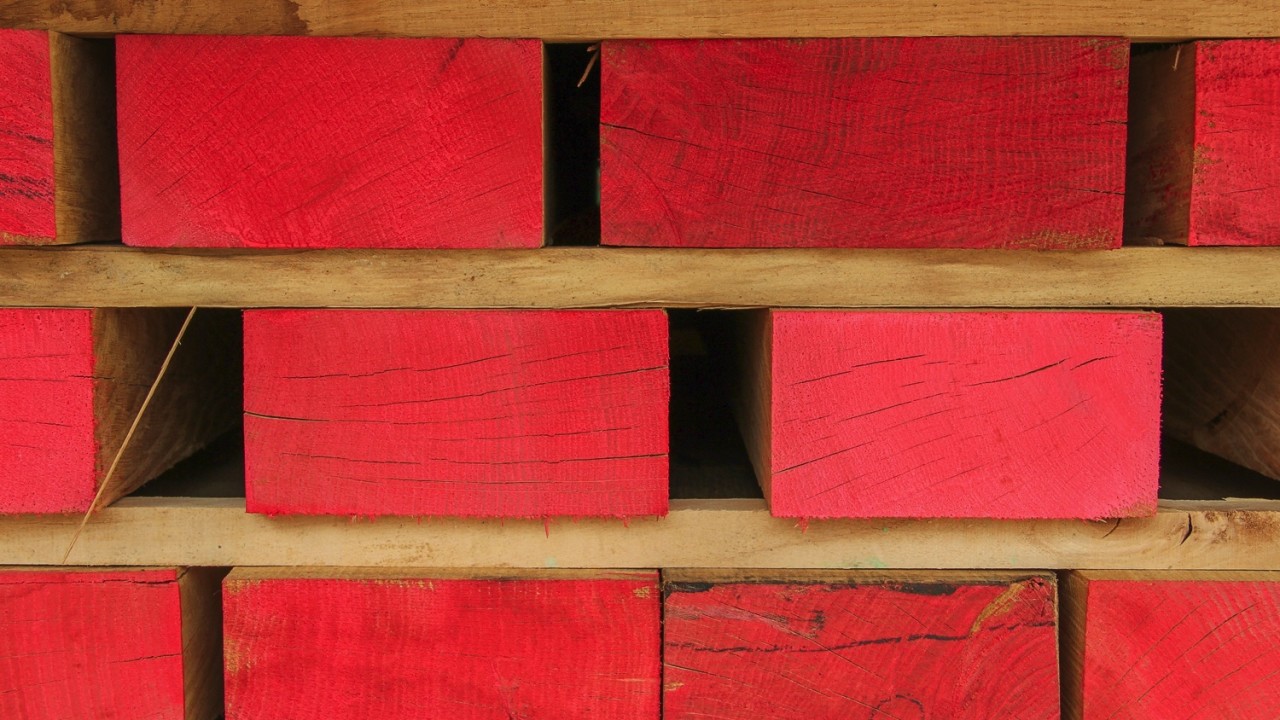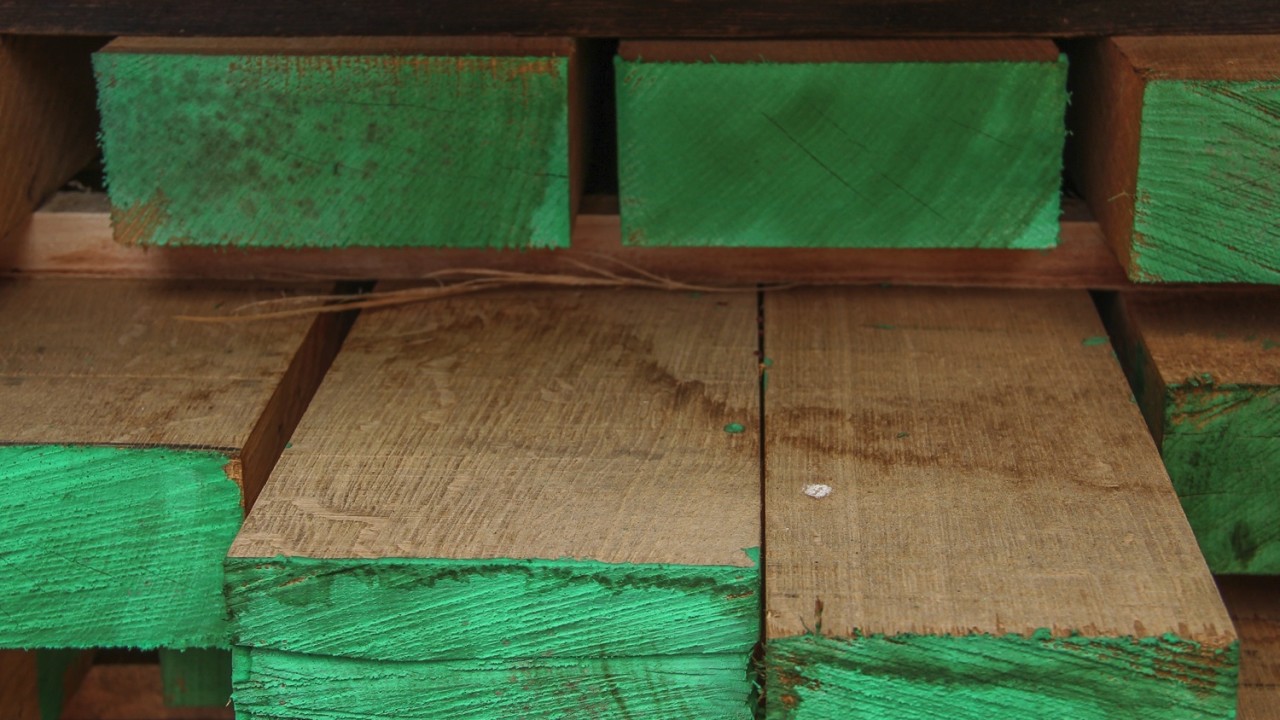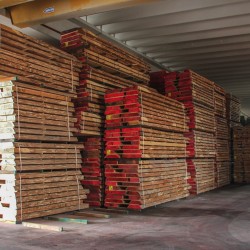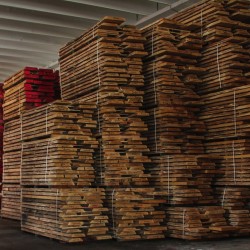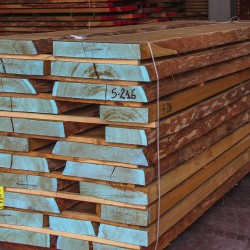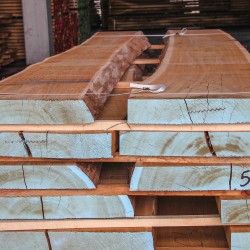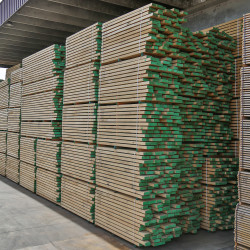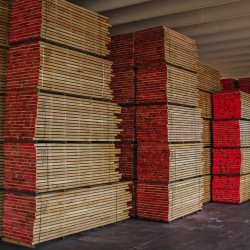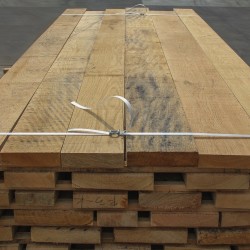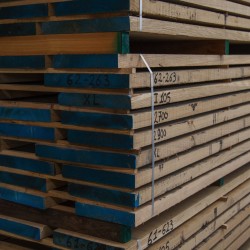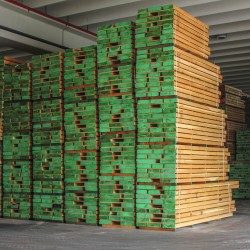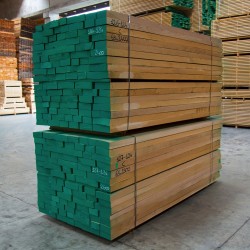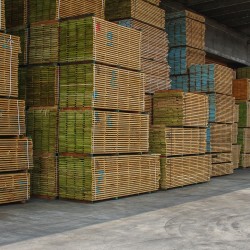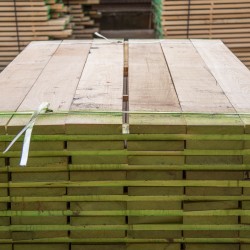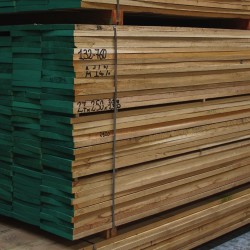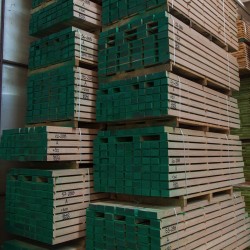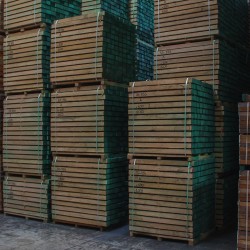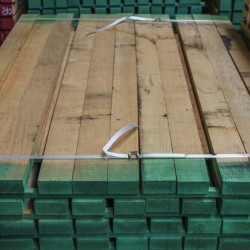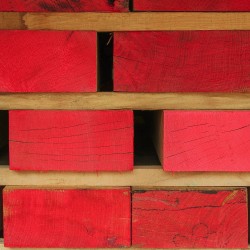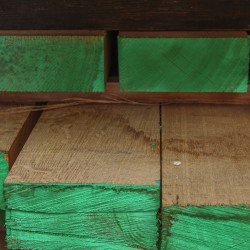The commercial name Oak covers the materials derived from three botanically distinct species, but for which the different types of wood are difficult to distinguish among them. The three species in question are the liebl. (o true Oak), the Q. pedunculata Ehrh. (or English Oak) and the Q. pubescens Wilid. (or Downy Oak). Oak trees can grow to very large sizes: heights exceeding 40 meters with girth diameter of 1.5 meters and over. Normally the trunks of the three species are considered mature when they reach a diameter of 45-55 cm. The trunk is quite straight and uniform, with a thick and wide crown set upon robust branches.
The yellowish off-white sapwood is clearly differentiated from the brown heartwood, turning to darker shades over time. The pith rays are very evident, especially on the radial surfaces where they form glossy reflective sections.
Specific weight of the green wood: 1080 kg/m3; after normal seasoning: 780 kg/m3
Oak wood has been prized since ancient times for building ships, maritime, hydraulic and road structures, for support structures and various types of heavy formwork and woodwork in general. In addition to these important primary uses, oak is also used for flooring, barrel-making (tubs, barrels, various containers), furniture (which is very heavy, however), interior and exterior window and door frames and railroad ties.
Types
- Unedged
- I°
- I°-II°
- II°-III° (B)
- Square edged
- I° (Prime)
- I° Extra Wide
- I° Vertical Grain
- B (Knotty)
- Elements / Fix width
- A/AB
- A 1 Face Clean
- Rustic
- Wormholes
- Frisa
- Squares
- A / AB
- A 1 Face Clean

